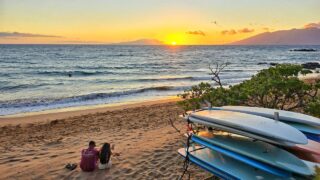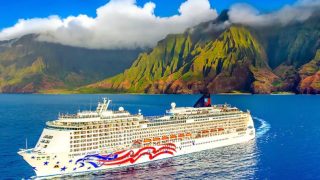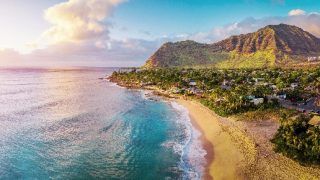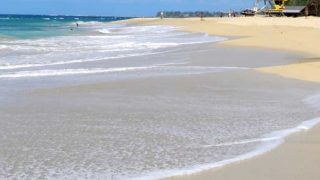I’m prone to seasickness (though not to airsickness). Sitting in the back seats of cars and buses doesn’t leave me feeling all that great either. How about you?
If you’re bound for Hawaii, the water starts getting rough here, generally about October. Today’s post might help if you’re planning on any of the following:
- Na Pali boat tours
- Mainland to Hawaii cruises
- NCL Inter-Island cruises
As for my own experience, we recently took an Alaska cruise which started in California. The trip up to Alaska was beyond rough. I was in bed and drugged for the first two days after applying a Scopalomine patch. In short, I was miserable, and as a result, so were my traveling companions.
We are now planning a cruise across the infamously rough Tasman Sea between Australia and New Zealand this Fall. I’m really determined to enjoy myself, not get seasick, and not spend my cruise time in bed and/or drugged.
Here’s a list of what I’ve tried that hasn’t been very satisfactory:
- Scopalomine patch. This took too long to work, and really should be started well in advance of rough sea conditions. I never felt quite right until I took it off.
- Dramamine. These should be called sleeping pills, given how drowsy they make me.
- Bonine. Better than dramamine, but still completely unacceptable in terms of how they leave me feeling and how ineffective they have been.
- Wrist pressure bands. The manual bands that have what feels like a marble inside that presses on the inner wrist. These just did nothing in my experience.
- Ginger candy. Tastes great, but doesn’t do a thing to alleviate my seasickness.
In preparation for our upcoming trip, I’ve started reading all of the forums again, including Cruise Critic and Frommers.
Here’s a list of what I’m planning to do next:
- Follow the ocean conditions closely using this oceanographic site. That way I can know what is coming, and plan my action plan accordingly. If I’d seen what was ahead when we sailed to Alaska, I’d have used the Scop patch sooner, and it might have worked better.
- Relief Band. I’m really excited (and hopeful) to try this. This is an electronic, battery operated adjustable stimulator designed to prevent motion sickness (and other kinds of nausea). It has very favorable reviews in the forums, so, for $80, I’m going to give this a try. The only real negative things I read are that some people are annoyed by the constant tingling feeling in your hand it produces. But I’ll take tingling over nausea in a heartbeat.
I’ll let you know how my new plan works out.
In the meantime, what have you tried, and what works for you and what doesn’t? I’m anxiously awaiting your input and suggestions.
Get Breaking Hawaii Travel News







Hi,
Regarding your seasickness — I found this website (below) helpful when I took my first cruise as I also suffer from seasickness and did not get ill at all.
I used the Bonine and it worked for me.
Happy cruising!
Cheers from Vancouver, B.C.
http://www.yachtsdelivered.com/seasick/sickcure.htm
I’ve taken a cruise from San Francisco to Alaska; I had heard bad things about the northward voyage, but the roughest time turned out to be in the Inside Passage, when the captain decided for some reason to turn off the stabilizers.
I have also done interisland cruises (once on American Hawaii and twice on NCL), and was surprised by how rough the seas were off Maui. On the last trip, I switched from scopalamine to bonine, and found the latter much more pleasant – I did, however take my first pill as soon as I got on board (several hours before departure), and found that that precaution seemed to immunize me against seasickness for the entire trip; after I made it through the first round of motion OK, my body seemed to adjust.
The cruise on the Pride of Hawaii from Honolulu to Los Angeles was the smoothest of all the cruises. There were promises of 10 meter waves from a storm elsewhere in the Pacific, but they never arrived.